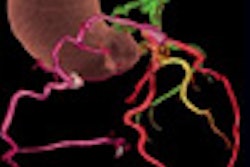In a review article published in the November 29 issue of the New England Journal of Medicine (NEJM), researchers from Columbia University Medical Center in New York City raised issues about the potential increases in long-term cancer risks for individuals scanned with CT.
While radiation exposure from CT is not taken lightly, and a great deal of effort has been directed on several fronts, including dose reduction through technologic advances, adoption of "as low as reasonably achievable" (ALARA) concepts, and the use of appropriateness criteria as well as accreditation activities, the ACR stated that publicity surrounding this article may cause patients to refuse CT scans when the benefits outweigh the risk, and vital medical information would thereby become unavailable.
"Patients need accurate information on which to base their health care decisions. They may be terribly confused and unduly distressed by some of the statements in this study," said Dr. Arl Van Moore Jr., chair of the ACR Board of Chancellors.
The NEJM article compared absorbed organ dose for head and abdominal CT scans with received radiation dose of atomic bomb survivors from Japan, and used extrapolated information to predict increased future cancer risks for CT scan recipients.
The ACR response questions underlying assumptions, including that the authors equate radiation exposure and effects experienced by the bomb survivors with the radiation dose produced from CT.
"Most CT exams are performed in a controlled setting. They result in limited radiation exposure to a small portion of the body," the ACR statement reads. "Atomic bomb survivors experienced instantaneous radiation exposure to the whole body. Also, CT exams expose patients solely to x-rays. Atomic blast survivors were exposed to x-rays, particulate radiations, neutrons, and other radioactive materials. The known biological effects are very different for these two scenarios."
Take away messages of the ACR response include that patients should keep records of their x-ray history and question their physicians about the following:
- The purpose of the exam and how it would improve care
- If alternative imaging studies are available that do not use radiation yet provide the same clinical information
- Whether the facility is ACR-accredited
The ACR further suggests patients visit Web sites, including the Radiation Safety section of RadiologyInfo.org, which offers patient information that is co-managed by ACR and RSNA.
In May 2007, the ACR issued the "ACR Whitepaper on Radiation Dose in Medicine" that outlined 33 specific action items to help reduce radiation dose, including the creation of a Dose Registry in 2008 that would address CT dose, and recommended working with other medical specialties to increase awareness of radiation dose issues.
Related Reading
Increased use of CT scans raises risk of higher radiation exposures, November 20, 2007
Radiation exposure of pregnant women doubles in 10 years, November 28, 2007
Copyright © 2007 AuntMinnie.com




















